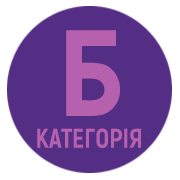INKLUSIVES BILDUNGSUMFELD: DIE ERFAHRUNG MEINER ALMA MATER
DOI:
https://doi.org/10.32782/inclusion/2024.4.1Keywords:
inclusiveness, social inclusion, vulnerable groups, diversityAbstract
The article analyses the experience of Lesуa Ukrainka Volyn National University of introducing inclusiveness into the educational environment, emphasising the priority of creating comfortable conditions for all participants in the educational process. The article considers the issues of supporting vulnerable groups of social inclusion, including people with functional disabilities, chronic diseases, refugees, internally displaced persons, ethnic minorities, people with low socio-economic status, residents of remote areas, transgender people, people with dyslexia and hyperactivity, and war veterans. The university has implemented a number of projects to support students with special needs. The Department of Medicine is equipped with navigation signs in Braille for students with visual impairments. An inclusive hub has been operational for several years, and all buildings are equipped with ramps and lifts. The university's policy is aimed at adapting the architectural, logistical and information environment, as well as promoting the ethics of equality, respect for human rights and diversity. The article identifies the challenges of inclusiveness at the institutional level. It also notes the role of the European University Association (EUA), which facilitates the exchange of approaches and strategies between European universities, stimulates a pan- European discussion on inclusiveness. The article presents recommendations for overcoming the challenges. In order to guarantee an inclusive and equitable educational process, it is essential to give due consideration to diversity, to actively involve students, to take account of the factors that may impede the educational trajectory, to develop educational programmes with an inclusive component, to provide accessible learning materials, to offer flexible and alternative learning options, and to create a favourable and comfortable atmosphere for all participants in the educational process.
References
Diversity & Inclusion. URL: https://eua.eu/issues/12:diversity-and-inclusion.html (accessed: 01.05.2024).
Hillmert S. Soziale Inklusion und Exklusion: die Rolle von Bildung. Inklusion und Exklusion: Analysen zur Sozialstruktur und sozialen Ungleichheit / R. Stichweh, P. Windolf (eds). Wiesbaden: VS Verlag für Sozialwissenschaften, 2009. Рр. 85–100. DOI: https://doi.org/10.1007/978-3-531-91988-1_5.
Halytska О. Wie schafft man ein inklusives Bildungsumfeld? Сучасні проблеми германського та романського мовознавства: Матеріали ІX Міжнар. наук.-практ. конф., м. Рівне, 15 лют. 2024 р. Рівне, 2024. С. 86–87.
Безбар’єрна освіта: у виші Луцька впровадили систему орієнтування для студентів з порушенням зору. Rayon. 2024. 27 лют. URL: http://surl.li/uavdr (дата звернення: 01.05.2024).
Approaches in learning and teaching to promoting equity and inclusion. Learning & Teaching Paper. 2021. #12. URL: https://eua.eu/resources/publications/959:approaches-in-learning-and-teaching-to-promoting-equity-and-inclusion.html (accessed: 01.05.2024).







